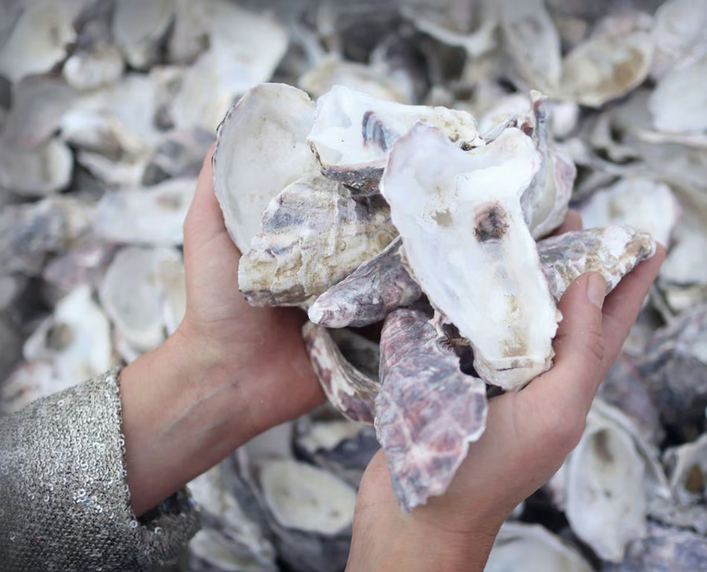“Biomaterials” are materials made using biological matter, and some engineers and designers are turning to them for their “visual richness”, alongside their eco-credentials.
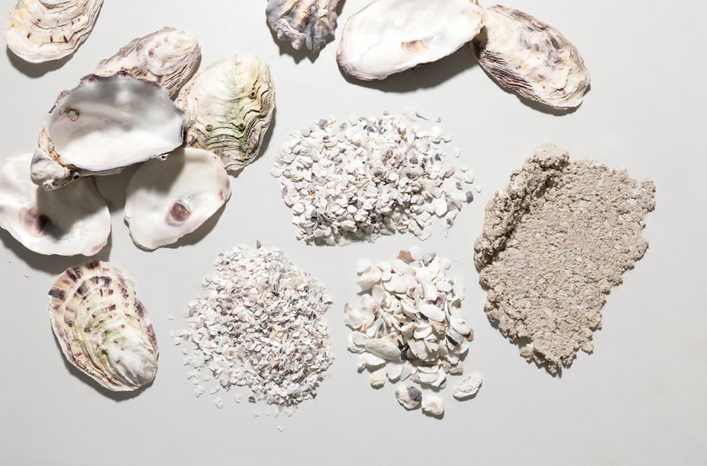 A growing number of people around the world are exploring ways living organisms and their products can be integrated into our built environment – from algae-based bricks to straw or fungi wall panels, and render made from oyster shells.
A growing number of people around the world are exploring ways living organisms and their products can be integrated into our built environment – from algae-based bricks to straw or fungi wall panels, and render made from oyster shells.
One benefit is that the biological “ingredients” capture CO2 as they’re grown. Once the ingredient (microalgae or seaweed, for example) is harvested and made into a building material, it’s often “dead” and now acts as carbon storage. But materials are also being designed so the organism continues to live – or has other organisms then living on it – meaning it continues sucking up CO2 and emitting oxygen over its lifespan.
So what are the new biomaterials sprouting up, and how long until you might see them on the market?
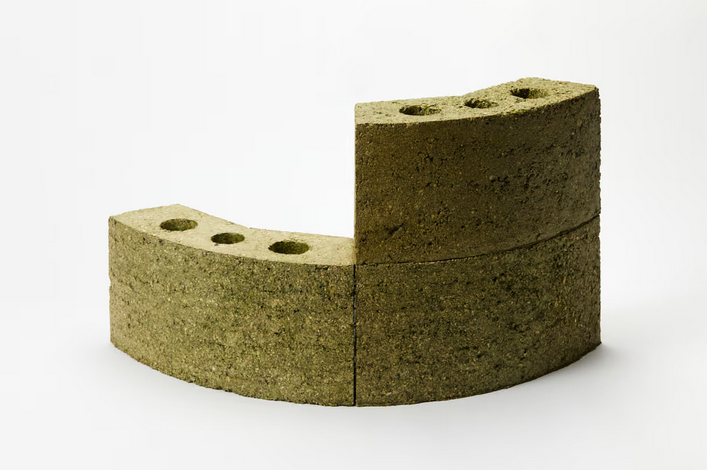 In the US, microalgae is being used to create a cement replacement for construction blocks, while macroalgae – or seaweed – is being used for housing in Mexico. A Danish company is producing acoustic panels from eelgrass, inspired by a roof thatching technique used in the 1600s.
In the US, microalgae is being used to create a cement replacement for construction blocks, while macroalgae – or seaweed – is being used for housing in Mexico. A Danish company is producing acoustic panels from eelgrass, inspired by a roof thatching technique used in the 1600s.
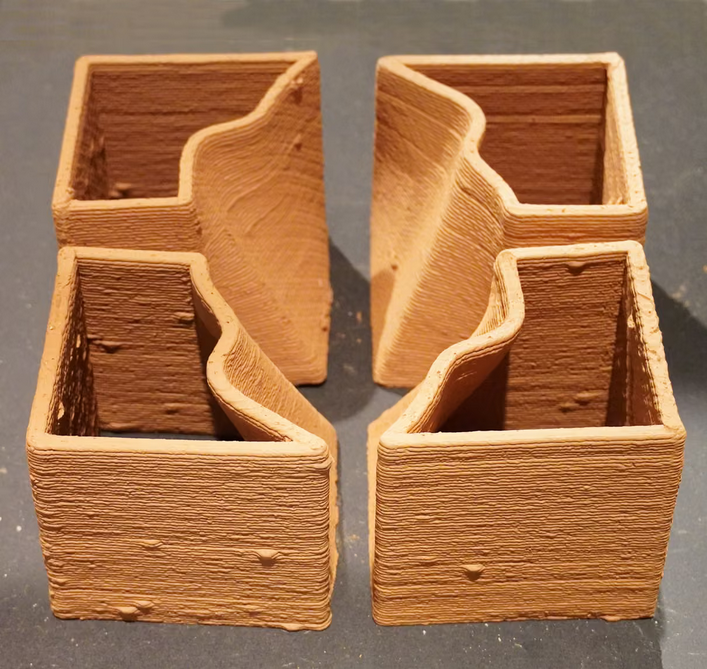 In Australia, microalgae has been used it to create breeze blocks called RoboBlox, which are 3D printed.
In Australia, microalgae has been used it to create breeze blocks called RoboBlox, which are 3D printed.
At the University of Technology Sydney they have taken seaweed from an industrial cultivation plant and combined it with oyster shells from the NSW coast food industry to create a mottled seaweed-green concrete-like brick. They’re testing a range of seaweed waste products, from sheeting and cladding to interior tiles and acoustic paneling, at various scales to ensure they meet industry standards.
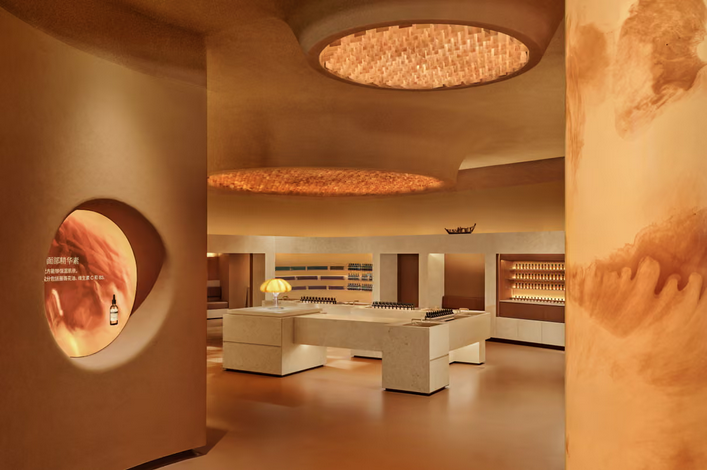 One algae product already in use is a decorative film that has recently been applied over backlit glass on the walls and pillars. “We’ve been able to create wonderfully deep fluid patterning reminiscent of marble but without the heavy environmental cost or logistical limitations of quarried stone,” the manufacturer says.
One algae product already in use is a decorative film that has recently been applied over backlit glass on the walls and pillars. “We’ve been able to create wonderfully deep fluid patterning reminiscent of marble but without the heavy environmental cost or logistical limitations of quarried stone,” the manufacturer says.
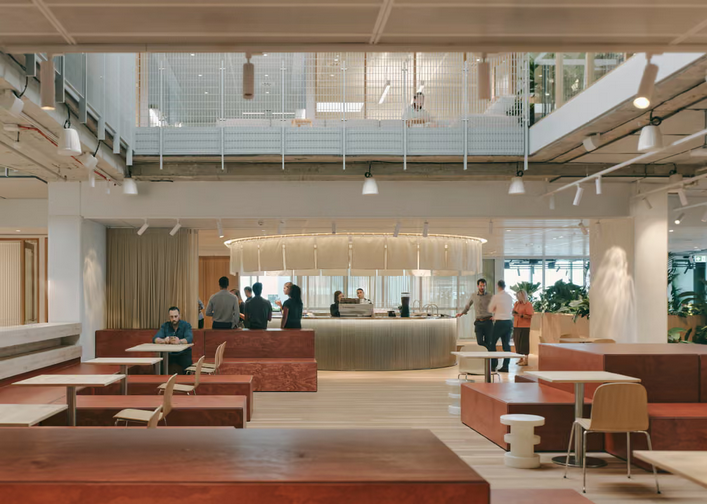 Using oyster shells donated by restaurants and seafood wholesalers, an Australian company has developed a range of renders for interior walls in various textures, ranging from natural pinks and browns to off-whites and pale khaki, with flecks of opalescent oyster shells performing something of a terrazzo effect in some finishes.
Using oyster shells donated by restaurants and seafood wholesalers, an Australian company has developed a range of renders for interior walls in various textures, ranging from natural pinks and browns to off-whites and pale khaki, with flecks of opalescent oyster shells performing something of a terrazzo effect in some finishes.
A postdoctoral student has developed wall panels made of a semi-translucent material embedded with living cyanobacteria. As the bacteria are still alive, it continues to photosynthesise, drawing in carbon dioxide and producing calcium carbonate, which strengthens the panels. Prototypes have been installed at St Andrews Botanic Garden in Scotland.
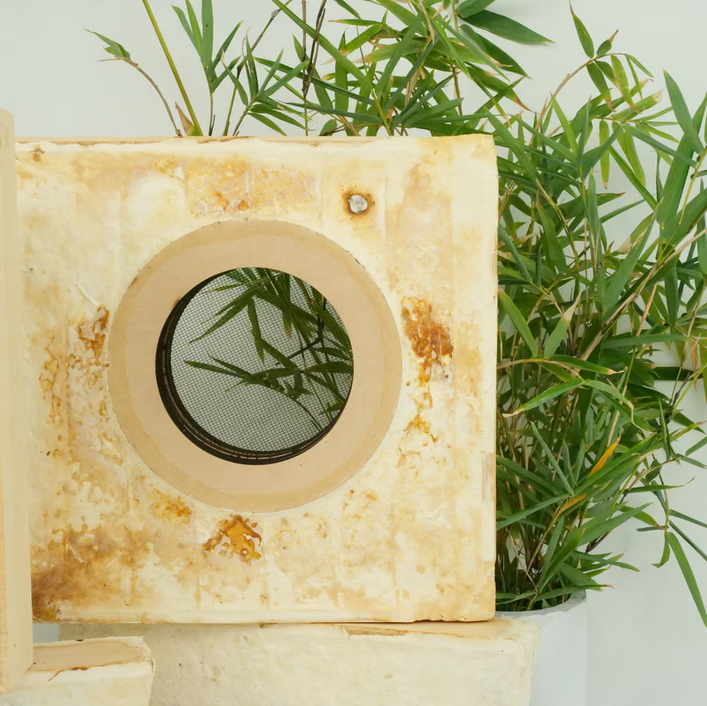 The Bio-Based Materials Design Lab in Australia has created building panels using bamboo and mycelium, the root-like fibers that grow from fungi. The mycelium isn’t alive in the panels, which allays concerns about potential negative health effects, and they can be used externally when waterproofed with existing natural coatings.
The Bio-Based Materials Design Lab in Australia has created building panels using bamboo and mycelium, the root-like fibers that grow from fungi. The mycelium isn’t alive in the panels, which allays concerns about potential negative health effects, and they can be used externally when waterproofed with existing natural coatings.
An Australian company makes non-structural wall and ceiling panels from reclaimed wheat straw, including some incorporating biochar.
You can read the original article at www.theguardian.com

